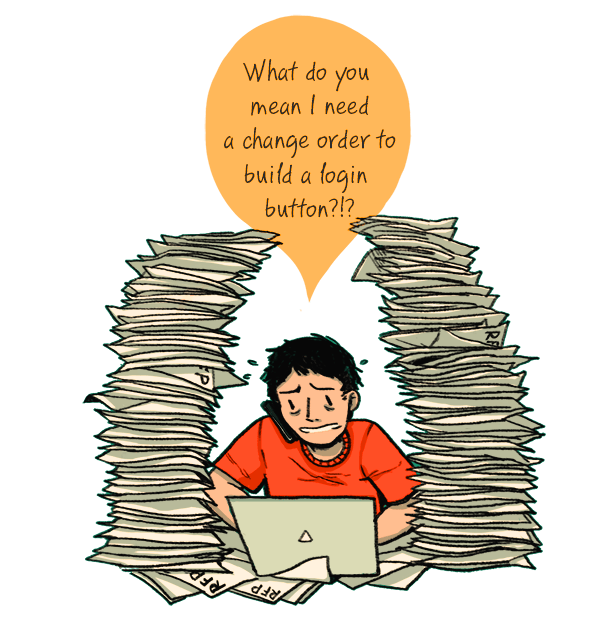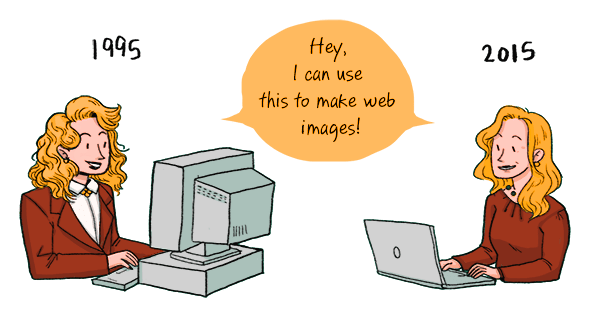I’ve been on both sides of software vendor evaluations. I spent 14 years as a Sales Engineer working with database technologies and HR applications. I learned to show each product at its best, handle objections, and put my evaluation team at ease.
Now, as a software buyer, I never fall for the line, “We’ll have our people set it up for you at no cost, to ensure you’re successful.” This roughly translates to, “It’s so hard to set up that only one person at our company can do it, and there’s no documentation.”

But after answering reams of RFPs (Request for Proposals) and sitting in on a dozen scripted demos, I keep noticing the same crucial evaluation criteria is often missed.
Here are 8 things to look out for when selecting your next enterprise software:
1. Company Culture Fit
It’s not about whether their sales rep takes you to a posh enough bar for happy hour. Your company spent a lot of effort defining its values and goals, but sometimes these are forgotten when choosing an application. If your company vision puts you on the cutting edge of technology in your market space, why make the “safe choice” by selecting yesterday’s IT vendor? And if your organization values great user experience and transparency, why are your reporting tools trapped on individual desktops, with no visibility for the people who care about those numbers?
<br>

2. Engagement Factor
What is the number one reason people leave a job? Lack of engagement. Okay, I lied. The number one reason is problems with the direct supervisor, but lack of engagement is a close second. But even before you leave a job, if you’re not engaged, it’s hard to bring your best self to the office every day. How engaging will this application be for your end users? Why not choose something that will be fun for them to use?
3. Alignment of Vendor’s Growth Trajectory
When you get a roadmap presentation from the vendor’s Product Manager, can you understand the product direction? Does it align with what your company wants to accomplish in the coming years? Sure, if your spend with them is big enough, you can force them to develop features, but does their direction truly fit with what you need? And if what you need is so specialized that you can’t find that vendor, maybe what you really want is an in-house custom application. If you don’t have the resources, consider buying out an excellent boutique development firm.
4. Flexibility of Application
The world is changing fast. Today’s star application may become tomorrow’s shelfware. Is the solution flexible enough to handle things you haven’t even encountered yet? Take Adobe Photoshop as an example. It was the best digital photo editing software of its time in 1992. But when the World Wide Web became the publishing platform of choice, it was also the best image editing software for GIFs and JPEGs. And today -- decades later -- it still is. Photoshop only costs a fraction of what you spend on enterprise applications, so make sure you consider this kind of flexibility when you choose a long-term solution.
<br>

5. ROI of Faster Applications
Everyone runs ROI numbers for any significant purchase. But do you calculate how much it costs for each second employees wait for a screen to redraw? That’s a hidden cost, but often a high one. Every second that the answer doesn’t appear is an opportunity for the person waiting to check Facebook or see what’s available on AirBnB this weekend. Speed begets productivity and engagement, and you shouldn’t overlook it.

6. Prerequisite User Skills
Be honest with yourself about the skill level of your users. If they’ll require a week of training in SQL and data modeling in order to use the tool, it better provide enough value to take them away from their other responsibilities.
7. Internal Support Requirements
Most buyers ask what IT headcount is required to support the application. But what about supporting end users that are having problems using it? Sure, you can buy the highest level of support (premium, platinum, or whatever the vendor’s marketing department wanted to call it). But that still probably only gets you two named support contacts. What happens when Sam from HR needs help with his spreadsheet? Who should he call?
8. Number of Moving Parts
When it comes to deploying and maintaining a solution, the number of moving parts matters. A lot. That’s why iPhone owners are generally happier than owners of other phones. It’s easier to track down problems when you’re not dealing with three connected systems from different vendors. And it will be easier to find the information you need when you don’t have to weed through three different sets of vendor documentation, filtering for your OS version and hardware configuration, in order to isolate a problem.
Next time you’re looking at software, consider including these things in the discussion. It may involve more than checking a box on an RFP, but if it leads to a better decision, it’s well worth the effort.
<br>








